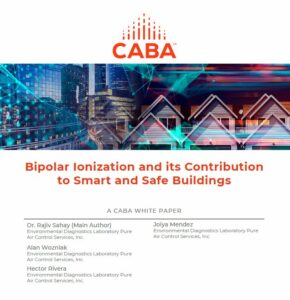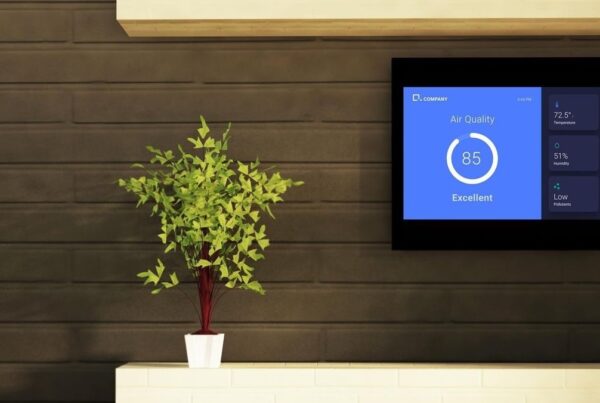Air ionizers to control building contaminants? This ASHB white paper takes a closer look, reporting on the results of experiments to assess the effects of negative and positive ion concentrations using various ionizers and their effects on contaminants.
Download “Bipolar Ionization and its Contribution to Smart and Safe Buildings” at this link.
Special thanks to the main author, Dr. Rajiv Sahay and the team at Environmental Diagnostics Laboratory at Pure Air Control Services (PACS), and a big shout out to the members of the white paper subcommittee.
ABSTRACT
Maintaining a “smart” and safe building is challenging, especially so given the increased focus on chemical and biological contaminants. Poor building maintenance leads not only to loss of employee productivity, but also health- and hygiene-related issues. A variety of factors may be at play, including poor indoor air quality, inadequate ventilation, and even, potentially, chemical and biological contaminants. Minimizing the impact and promoting healthier conditions can be achieved by removing any of these contaminants present in the air or on surfaces or used in the building materials: volatile organic compounds, microbes (viruses, bacteria, molds, etc.) and other industrial chemicals. In recent years, there has been a renewed interest in the use of air ionizers to control biological (bacteria and fungi/mold) and chemical contaminants. This white paper reports on the results of experiments undertaken to assess the effects of negative and positive ion concentrations utilizing various ionizers (plasma technology) and their effects on building contaminants. Treatment with the bipolar ionization has shown a reduction in airborne S. aureus concentration of approximately 99.87% after 180 minutes.



